Because what we found at the Sonora Desert Museum was so
interesting and so varied, I have created two pages. This one contains the
animals and birds from what turned out to be a small, but very serious zoo
specializing in local desert animals.
The museum's collection of creatures consists of:
- 106 mammals of 31 taxa
- 241 birds of 72 taxa
- 361 reptiles of 86 taxa
- 122 amphibians of 23 taxa
- 10,700 fish of 9 taxa
- 840 arthropods of 78 taxa
|
There are a number of cats in the
area although all are rare and very shy. This one with the beautiful coat is
an ocelot. | 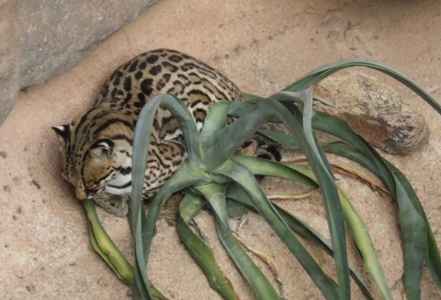 |
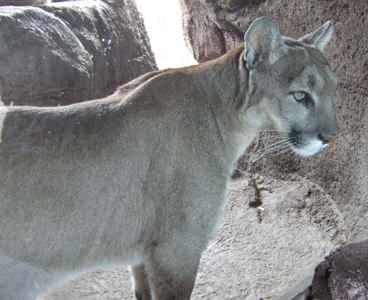 | The commonest is
the mountain lion or cougar. These are uncommon but have been known to attack people
in the remote canyons. So there are notices telling you what to do if you
see one in the wild. (besides feeling very privileged!) |
| Another rare and shy creature is the Mexican grey wolf. This is
now on the endangered species list. This one was asleep. I suspect they hunt
more at night. | 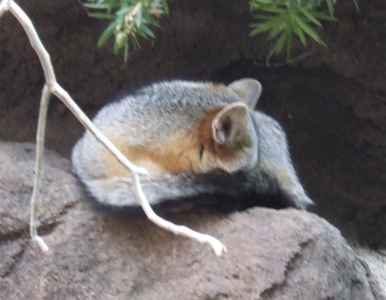 |
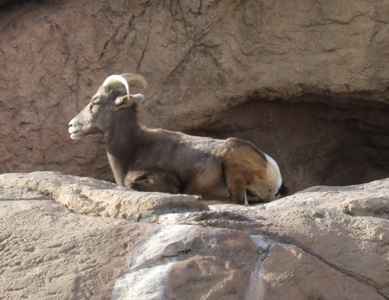 | Also not often
seen mainly because of the altitude at which it lives is the bighorn sheep.
The display areas for the animals are interesting, offering excellent
natural-looking compounds without obvious bars or fences. The museum is making more of
these and has developed a way of making 'natural' rocks in order to build an
appropriate setting for each species. We saw some of the
moulds used. The compounds help explain why this is a highly rated zoo
within the community. |
| I'm not sure if this coati mundi is local or even desert but there
are
several which have come to the zoo recently and look to feel well at home.
They are a key exhibit in their riparian section. | 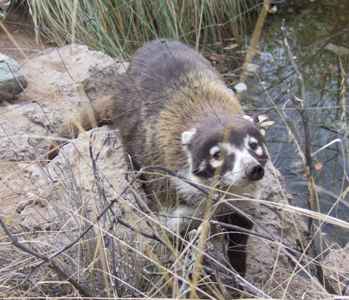 |
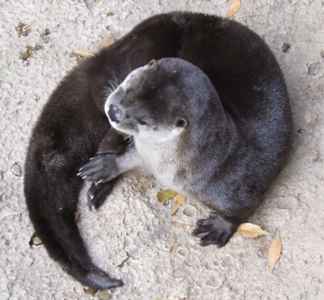 | This section also houses a
pair of otters which spend most of the day curled up on the artificial rock
sleeping. This one had just woken up. There is also an underpass where you
can look into their pool and watch them swimming under water. |
| Also there is a pair of beavers whose pool has a glass side. We spent some time trying to
photograph one swimming but it was just too fast for us and the camera. There
is also a
window into their den which is where this shot came from. | 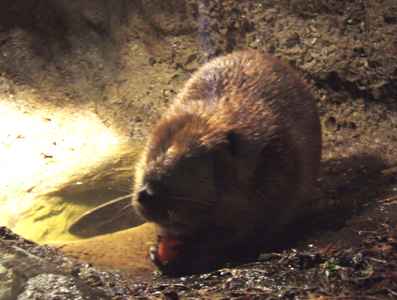 |
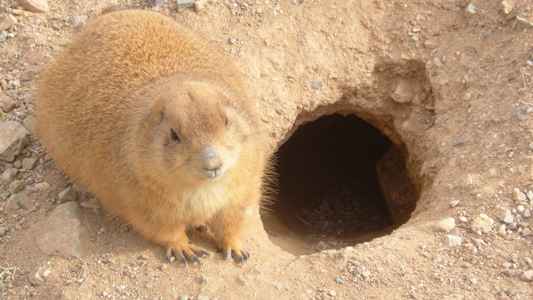 | Above ground is
this black tailed prairie dog posing for the cameras at the entrance to its burrow. It really
was totally unfazed by the proximity of humans. One of the other holes in
the compound was inhabited by a ground squirrel which was obviously building a
winter nest. Fascinating to watch. |
| Javelina meander in loose groups, feeding as they
move through an area. They dig up roots and bulbs with their sharp hooves or
with their snouts. They eat prickly pear cacti, spines and all, by tearing
off bites with their large canines. Because they don't have sharp cutting
teeth, much fibrous material is left on the prickly pear. Javelina chew as
they walk, so bits and pieces fall from their mouths, sometimes leaving a
short trail. | 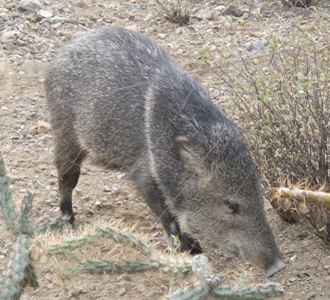 |
A specialized aviary houses humming birds. These tiny birds (photos are
larger than life) are constantly on the move with their wings beating at
over 10,000 beats a minute. They can hover and feed on the nectar from the
flowers or the feeders. The energy requirements are huge and explain why
they live on high octane nectar.
Other birds live in separate individual aviaries. There are notices of apology
stating that these cages are now seen as of sub-standard quality and that
they are to be replaced soon. The parrot is in a similar cage but the
distances and lighting enabled me to eliminate the bars. That was also true
for the screech owl. There is also a pair of elf owls but they were asleep.
Finally the raptor on the end just looked inscrutable as ever. They do fly
the raptors in demonstrations but we missed it.
| There are other cages with other birds. This jay is a really
vivid blue but was constantly on the move. | 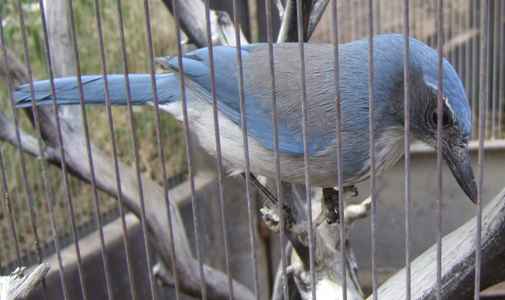 |
| The main aviary has many different birds which fly or walk around
freely as you walk around inside. I took quite a lot of photos of which these
are a representative sample. Some of them are very colourful, but of course
they don't wear name tags. | 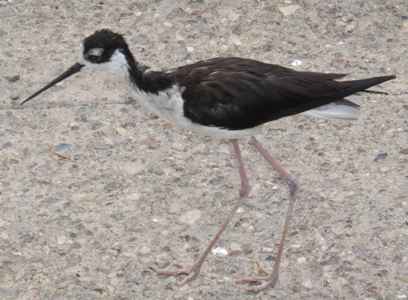 |
|